It is time for India to change the narrative with China
It is high time the Chinese political and military leadership are made to realise that chronic hegemonism and doggedness in constantly trying to crawl and clutch Indian territories are not going to work anymore and that the LAC must be clarified, writes Anil Bhat for South Asia Monitor
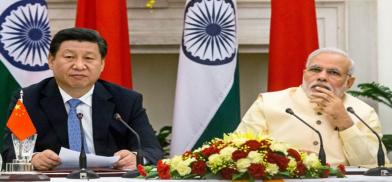
“A part of the ‘China dream’ is the establishment of a ‘unified global system’ or empire termed tianxia (all under heaven in Mandarin). Translating its enormous economic gains into coercive military power, China expects neighbouring nations to submit to its hegemony,” stated former Indian Navy Chief Admiral Arun Prakash in an article.
There seems to be no doubt that what transpired from early May 2020, on the India-China Line of Actual Control (LAC) was part of the Chinese Communist Party (CCP)-Peoples’ Liberation Army (PLA) combo’s plan to be implemented taking advantage of the raging coronavirus, which originated in China, and has so far impacted 214 countries and territories and shattered economies all over.
Following the Indian Army’s deadly response to the PLA upping the ante at Nathu La and Cho La in Sikkim in 1967, resulting in about 400 of its soldiers killed and a convoy of vehicles and many bunkers destroyed, the Chinese decided to settle all breaches of the perception-based and disputed Sino-Indian border termed as the LAC, by discussion and not resorting to the use of force and firearms.
In fact, the Chinese very smartly got this clause of not using firearms included in the second agreement in1996 on “peace and tranquility” along the LAC. The first agreement was 1993; the third, fourth and fifth ones, were in 2005, 2012, and 2014 respectively. Except for ambushing and killing four riflemen of India’s first and oldest paramilitary force, Assam Rifles at Tulung La in Arunachal Pradesh in 1975, PLA steadfastly continued its intrusions, incursions, transgressions, and straying across the LAC for almost 53 years till May-June 2020, including large scale ones at Sumdurong Chu in 1986-87 and Dolkam in 2017, all of which were resolved by discussion and without using firearms. If at all, there was any confrontation or heated exchanges between the Indian Army and PLA soldiers, they were confined to grappling/wrestling, or at the most, fisticuffs.
However, on May 5 and 9, 2020, PLA troops crossed the limit of the unarmed combat by using rods and stones resulting in about a hundred Indian personnel sustaining injuries. On June 15, 2020, at Galwan Valley, PLA crossed another limit by using very deadly medieval barbaric weapons like iron rods studded with nails and rods tied with barbed wire and killed one Indian Army colonel and nineteen other ranks. This was soon followed by a revenge attack by Indian Army soldiers, who came with sharp-edged weapons and fiercely attacked the PLA troops snatching some of their weapons and eventually killing, including with bare hands, more than twice the number of the Indian troops that were killed. While still no firearms had been used, by killing Indian soldiers, the PLA had violated all the past peace agreements.
According to a US news report of July 13, the Chinese Ministry of Civil Affairs told families of those who died in the Galwan Valley clash that they must forgo traditional burial ceremonies and cremate the soldiers' remains and that any funeral services should be conducted remotely and not in person. Though the government has used the threat posed by the spread of the coronavirus as a pretext, the assessment concludes that the new rules are a part of a deliberate effort by Beijing to undermine public awareness and erase any enduring reminders of the violent clash.
The June 15 barbaric attack was because of Indian Army overseeing and verifying PLA’s disengagement, which was not being adhered to as agreed upon in the first corps commander-level meeting at Moldo on June 6. What also emerged was PLA’s massive staging forward in many locations along the LAC. This was countered by Indian Army’s mirror deployment.
After many meetings, with the corps commander-level ones lasting as long as 15 hours - thanks to the Chinese - and discussions between lesser level military commanders and diplomats, a process of PLA disengaging reportedly began but still remains incomplete as PLA is not agreeing to back off from Pangong Tso.
With over five decades of 'trust' unravelling and knowing the history of the CCP-PLA combo’s hegemonic compulsions and the Chinese perception of being destined to dominate the world, even if a full-fledged withdrawal is effected by PLA, there is no guarantee that the same forward deployment will not be tried again. If so, with all the strategic infrastructure developed on the Chinese side and the terrain, the time required for PLA to stage forward will be much less than that for Indian Army.
While PLA’s plans/intentions were implemented with bloody fatal effect in Galwan on June 15, the PLA initiated non-fatal violence at Daulat Beg Oldie and Pangong Tso (all in Eastern Ladakh) and at Naku La in Sikkim between May 5 and 9, 2020, Chinese troops were seen carrying iron rods in their haversacks even up to ten days later in East Kameng district, Arunachal Pradesh, although no violence was reported there. All these reports only point towards protocol about the use of the force being violated by PLA as part of a premeditated plan. Technically, firearms were not used, but ‘peace and tranquillity’ were shattered by the PLA.
India’s stand is very clear: status quo ante as in April 2010. While both Prime Minister Narendra Modi’s July 3 visit followed up by Defence Minister Rajnath Singh’s visit, coinciding with Indian Army’s exercises, including a parachute drop and movement of tanks, were also meant to send a message to the Chinese. But New Delhi must always be mindful of Beijing’s ambitious plans, deviousness and doggedness and expedite all measures to make good long-standing deficiencies/urgent operational requirements.
Lessons learned
Lessons from the past must be learned and factored into India’s diplomacy and defence planning meaningfully and effectively. Even if PLA does get back to April 2020 status of the deployment, it will have to be watched hawk-like, because PLA’s aim is to occupy all commanding heights and tri-junctions. The Army’s task of monitoring will be much more effective if central strategic intelligence, including National Technical Research Organisation’s satellite intelligence is consistently shared with it. Incidents like losing twenty Indian Army braves on June 15 can possibly be avoided. And another important reason to keep the Army updated on PLA’s movements and locations, even if it disengages and de-escalates by reverting to its April 2020 deployment, the possibility of it repeating such a staging forward again cannot at all be ruled out.
It must be recalled as highlighted by Lt. Gen. P.G. Kamath (retd) in his article, 'China Lies and India Believes: The Road Ahead', “Look at Doklam Plateau; though we have not allowed them to build a road from Batang La to Gyemochen, Chinese have occupied the whole of the Bhutanese plateau of 89 sq km and have built an alternative road further east of the road that we had stopped. India can keep thumping its chest but the Chinese have stolen a march and are closer to the plains of India.”
Steps taken
The Indo Tibetan Border Police (ITBP), under the Ministry of Home Affairs, has recently been enhanced by forming two commands at Chandigarh and Guwahati under additional director generals for better operational functioning of about 35-38 battalions deployed along the LAC, from Ladakh to Arunachal Pradesh.
Interacting with this writer, Lt Gen J.S. Bajwa (retd), who is author of 'Modernisation of the PLA' (Lancer), and some other officers who have served at the LAC, suggested that all ITBP battalions deployed in the active sectors of the LAC must be fully under the operational control of the Army.
It maybe relevant to quote an excerpt of a letter written in July 2020 to the President, PM, Defence Minister and Services Chiefs by 144 veterans: “Over the decades, a substantial portion of the Army has been continuously deployed in its secondary role on internal security and counter-insurgency duties, at the cost of the availability of troops for the Army’s primary role of defence of territorial sovereignty. At the same time, large strength of the Central Armed Police Forces (CAPFs) are deployed in border areas in an essentially military role. This anomalous reversal of roles and duties now demands rationalization for efficiency and effectiveness in both internal and external national security.”
New Delhi must take serious note of its over seven decades of a history replete with thousands of hegemonic attempts and lies and the weak/conciliatory stance of the first prime minister Jawaharlal Nehru and the Congress party, and the ‘meaningless agreements’ since Panchsheel to date. The only exceptions were Lal Bahadur Shastri’s assertiveness during the 1965 war against Pakistan and Indira Gandhi’s assertiveness in 1967 against China and in 1971 against Pakistan.
New Delhi must now evolve a policy that has to be followed consistently and assertively, both on terrain and table.
Having gobbled many of its former neighbours in the past and now having been accused of spreading the deadly virus to the world, it is now posing a great threat to India’s integrity. China’s hegemonic greed is not only for India’s land but also for the sweet water rivers that flow on it, for making microprocessors.
Iqbal Chand Malhotra in his article, 'Smoking Mirrors: The illusion of the LAC', states, “For China, this water can only be harnessed from the Himalayas and the Karakorum’s rivers. It has invested around US$ 25 billion to build five dams on the Indus River in PoK (Pakistan Occupied Kashmir) with water storage reservoirs of over 225 km in length.”
It is high time the Chinese political and military leadership are made to realise that hegemonism and doggedness in constantly trying to covet and clutch Indian territories are not going to work anymore and that the LAC must be clarified.
While New Delhi has made a beginning in striking economically against China by banning over a hundred apps and canceling contracts, public sentiment against Chinese goods have shot up. Apart from burning Chinese President Xi Jinping’s posters, Indian shopkeepers refused to sell Chinese made rakhis during the recent Raksha Bandhan festival. The economic stakes must be raised as high as possible.
India must also become politically and diplomatically far more aggressive. It must take on China for grabbing Tibet, its illegal occupation of Indian territories so far, its suppression and torture of Uighurs and most of all it’s irresponsible ‘experimentation’ and the use of biological warfare.
On the LAC, New Delhi must shed any hangover of Nehruvian tendencies and be prepared to be not always reactive but effectively proactive also. The mountain corps must be fully equipped. If more light tanks and aircraft or any other weaponry are required, some readymade ones should be speed-purchased. For India’s very survival and progress, it is time to change its narrative and power on land, air, and sea.
While Indian soldiers taught their Chinese counterparts a deadly lesson without firearms on the night of July 15-16, 2020, the PLA will be well advised to desist from any more misadventures-without or with firearms.
(The author, a strategic analyst and former spokesperson, Defence Ministry and Indian Army, can be contacted at wordsword02@gmail.com)
References:
https://indianexpress.com/article/opinion/columns/india-china-border-stand-off-line-of-actual-control-galwan-valley-6474725/
(https://www.linkedin.com/pulse/china-lies-india-believes-road-ahead-lt-gen-p-g-kamath/)
https://www.timesnownews.com/columns/article/india-china-lac-latest-news-tension-issue-dispute-agreement/603723




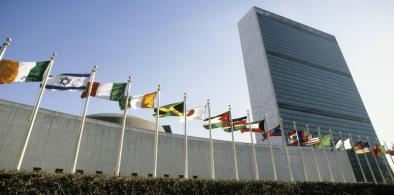

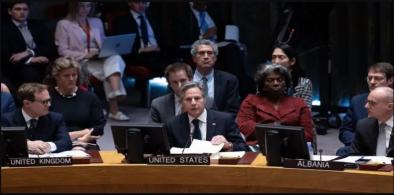
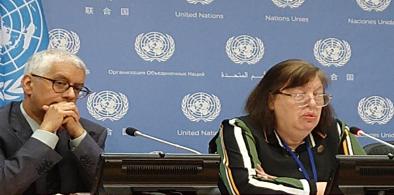
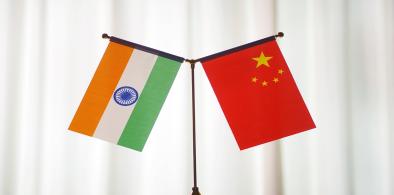
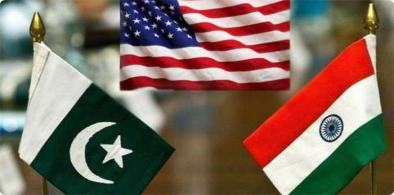







Post a Comment